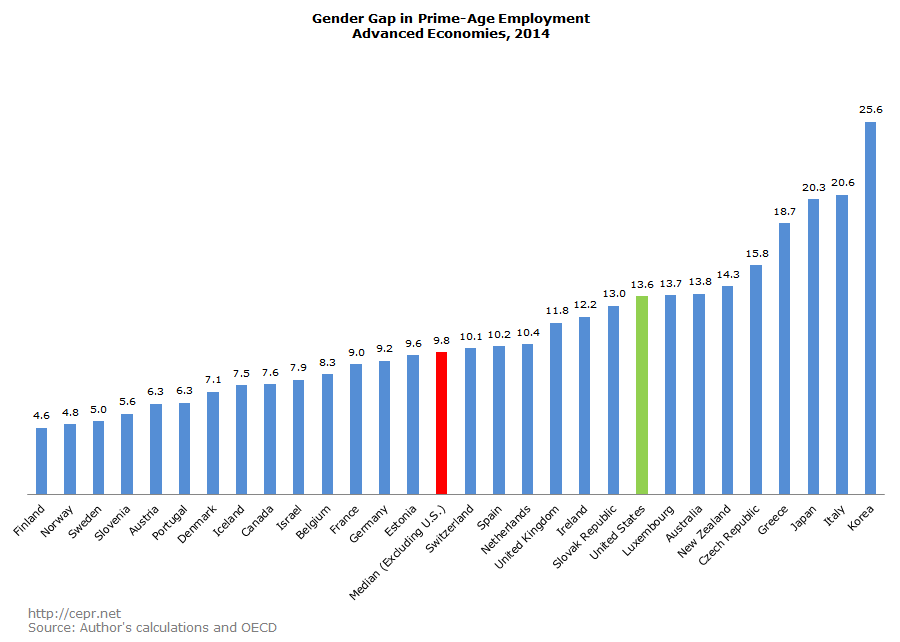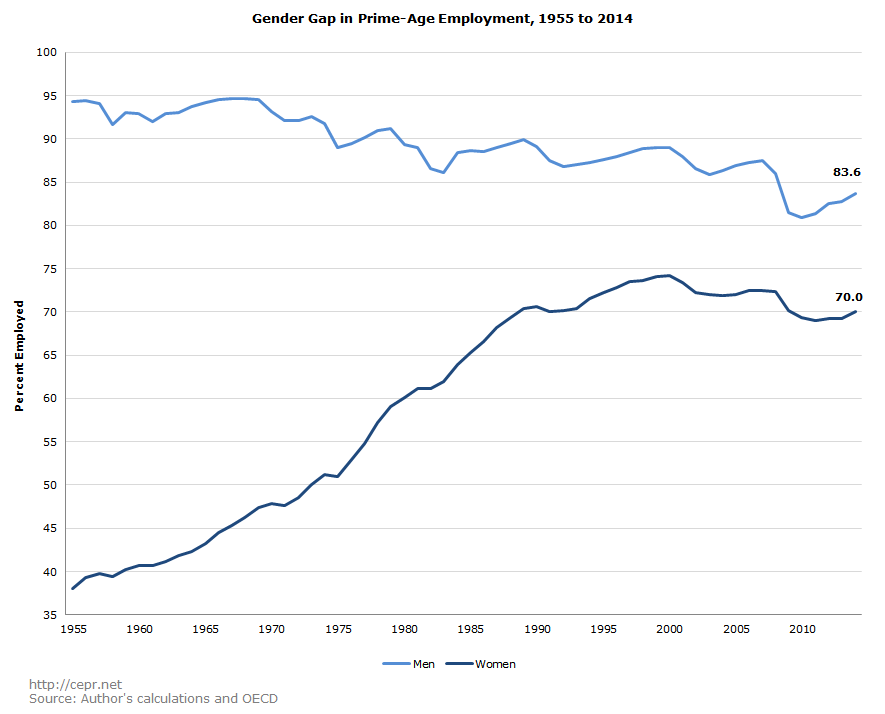October 13, 2015
In November 2014, over one hundred women were elected to the United States Congress for the first time in history. While this may be a historically significant event, women are still far less likely than men to ever work in Congress.
In many ways, what is happening in Congress illustrates what is happening in the economy more generally. While the gender employment gap has been shrinking for decades, significant disparities remain. The most recent data from the Bureau of Labor Statistics indicate that the employment rate of prime-age men is about 14 percentage points higher than the employment rate of prime-age women. (“Prime-age” refers to the ages 25 to 54. These are the years in which people are the most likely to be employed.)
In comparison with other advanced economies, this is a relatively large gap:

The gender gap in prime-age employment has fallen over time. In 1955, the gap was 56.2 percentage points. Since then, it has shrunk by over three-quarters:

So the gap has fallen substantially over time. Nevertheless, the gap has fallen less than one percentage point since 2001. Policies such as paid family or maternity leave, easier access to childcare, and higher rates of unionization, which are common in other industrialized nations, would help American women achieve their full potential.






